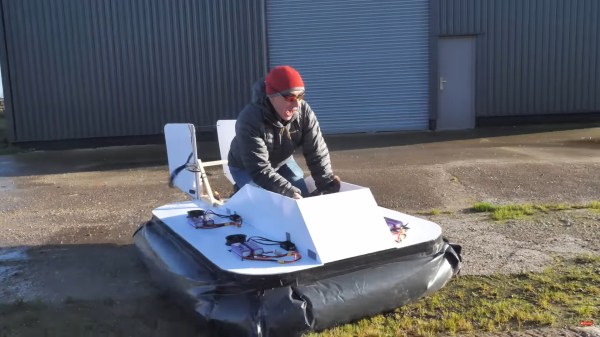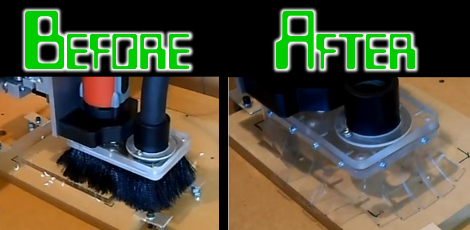When you think of a vehicle that can do it all- water, land, ice, snow and more- the hovercraft often comes to mind. And while they might not be ubiquitous, hovercraft catch the imagination of many a hacker just as it has for [JamesWhomsley] of [ProjectAir]. [James] has built a small, but just big enough hovercraft as you can see in the video below the break.
Starting with a small RC proof of concept, [James] tested out some of his favorite construction materials: foam board, trash bags, duct tape, and our personal favorite: hot glue! After a successful run with the radio controlled model, [James] set out to build a hovercraft big enough to carry a human.
The resulting hovercraft was definitely enough to take a human for a spin, despite still using RC airplane parts for power. Sure, there were a couple of instances of parts going flying, foamboard being shredded, and loss of control. Even so, the trash bag air skirt stayed intact, and the aforementioned damage was nothing some tape and hot glue couldn’t fix. [James] was back on the air in no time.
Of course, some of the very reasons that we don’t see hovercraft roaming the streets come up in the video, namely off-camber paths. But the build itself is quite good, and for those of us who’ve wondered what it takes to make a hovercraft, this video shows how the sausage is made.
This isn’t the first garbage bag based hovercraft, and we featured another RC/Arduino controlled version just a while back.
Continue reading “Trash Bag And Foam Board Hovercraft Doesn’t Fail To Succeed. Or Fail.”





 The build is one that should be achievable by anyone with basic dressmaking skills. White and lavender tutus are combined to form the base of the skirt, with a lace outer layer sewn on to create an attractive silhouette for the lights. A USB battery pack is hidden in a pocket in the back to power the show. A WS2812B LED strip is then attached to the skirt, and hidden behind an additional layer of white faux-fur to help diffuse the light.
The build is one that should be achievable by anyone with basic dressmaking skills. White and lavender tutus are combined to form the base of the skirt, with a lace outer layer sewn on to create an attractive silhouette for the lights. A USB battery pack is hidden in a pocket in the back to power the show. A WS2812B LED strip is then attached to the skirt, and hidden behind an additional layer of white faux-fur to help diffuse the light.









